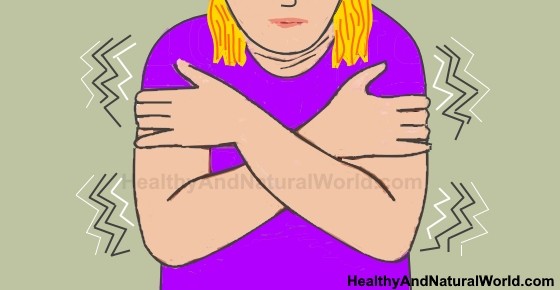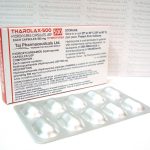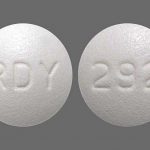
Contents
What Causes Shivering?
Shivering is a natural bodily response to various situations. Here are 14 causes of shivering, including dehydration, temperature drop, and infection.
The reasons for shaking vary.
- Shivering is a common bodily reaction when the body tries to warm itself.
- It is the rapid contraction and relaxation of muscles to generate heat.
Shivering occurs in various situations for different reasons.
Here are 14 causes of shivering:
- Dehydration:
- Lack of fluids can cause shivering.
- When a person loses fluids or doesn’t drink enough water, the body’s fluid balance is disrupted.
- If fluids are not replenished quickly, the blood thickens, and the body goes into a state of alarm, causing cramping or shaking.
- Temperature drop and fever:
- Rapid contraction and relaxation of muscles occur when the temperature drops or there is a fever.
- This process generates heat and helps keep the body warm by increasing body surface heat production.
- Fever, caused by infection, allergic reactions, or inflammation, can also lead to shivering.
- Age:
- As people age, their ability to tolerate cold decreases.
- Health issues that come with age can also contribute to a decreased ability to tolerate cold.
- Children, especially those with less body fat, may feel colder than adults and start shivering quickly.
- Low body weight:
- Being underweight can lead to inadequate body fat for insulation.
- Inadequate food intake or eating disorders can also hinder the metabolism’s ability to generate enough heat.
- Infection:
- Shivering can occur when the body is fighting a bacterial or viral infection.
- Muscle contraction and relaxation produce heat, which aids in fighting the infection.
- This process can help kill infection-causing bacteria and promote overall health.
- Low blood sugar level:
- People with diabetes must be cautious as low blood sugar levels can cause shivering.
- Symptoms of blood sugar drop include trembling, feeling cold, weakness, dizziness, and sweating.
- These reactions can occur when a person hasn’t eaten for a long time and can disrupt blood sugar regulation.
- Hypothyroidism:
- Faulty thyroid function affects heart function, leading to cold extremities.
- Testing and treatment are necessary to address these symptoms and restore normal energy levels.
- Anemia:
- Iron deficiency affects the transportation of oxygen throughout the body, leading to cold sensations.
- Lack of iron can also make the thyroid sluggish, resulting in hypothyroidism and increased coldness.
- Poor circulation:
- Poor blood circulation can cause cold extremities.
- This can result from heart issues, blood vessel narrowing, or artery blockages.
- After getting an anesthetic:
- After anesthesia wears off, shivering may occur due to the cold temperature of the operating room and immobility.
- Sedation can also affect body temperature.
- Sleep deprivation:
- Lack of sleep can affect body temperature regulation and circulation.
- Psychogenic movement disorders:
- Mental stress can cause involuntary movements, including shivering.
- Treatment involves a combination of physical and mental therapy.
- Fear, stress, anxiety, or excitement:
- Strong emotions can cause shivering as part of the body’s fight-or-flight response.
- Adrenaline release can lead to shivering.
- Extreme physical exertion:
- Vigorous exercise can cause the body temperature to drop, resulting in shivering.
How do I stop shivering?
The most common causes of shivering are extreme cold weather or infections.
To avoid shivering, you can try the following precautions:
- Wear warm clothing in winter.
- Consume warm water and hot beverages.
- Maintain good hygiene to avoid infection.
- Use relaxation techniques for anxiety and stress management.
- Consume fruits like bananas and grapes to regulate blood sugar levels.
- Engage in physical activity to warm up the body.
- Eat a well-balanced diet high in protein, fat, and carbohydrates.
- Check if you’re getting enough B vitamins.
Medications can also help control shivering.
The normal body temperature range is about 97°F to 99°F. Although shivering is a natural response to cold, additional measures must be taken to combat it.
Recurrent episodes of shivering should be addressed by doctors to diagnose underlying health conditions.
Is shivering a symptom of COVID-19?
The Centers for Disease Control and Prevention (CDC) has identified new symptoms associated with coronavirus cases.
Symptoms of COVID-19, such as fever, coughing, and difficulty breathing, are similar to those of the flu or common cold. However, the CDC has reported new symptoms, including repeated shaking or shivering, muscle pain, headache, and loss of taste or smell.
If you have COVID-19 with a high fever and cough, you may have COVID-19 pneumonia.
- Those at high risk for pneumonia include the elderly, smokers, and those with underlying health conditions.
- Tests may be performed to assess lung involvement and determine the appropriate treatment.
However, shivering alone may not be a symptom of COVID-19.


